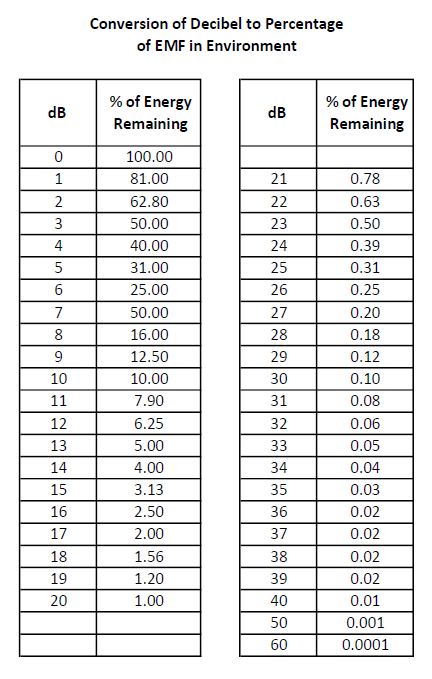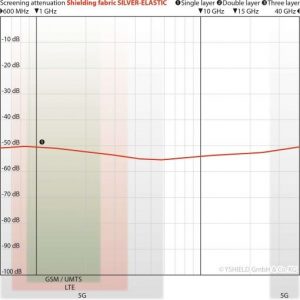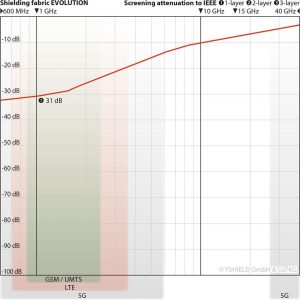Decibels explained
People often think of decibels (dB) just as a measure of sound. However, decibels are actually used to measure comparative energies.
The decibel scale is logarithmic, not linear. This means you use a formula to calculate the value. Basically, for every 3 decibels you move up or down the scale you are adding or dropping approximately 50% of the energy. We have included a table so you don’t have to calculate it.

With regards to EMF shielding we use dB to describe the shielding value of a product. ie how much energy will the shielding product allow to pass through. ie if you place a shielding canopy with a dB rating of 50 at 1 GHz around your bed there will still be 0.001 % of the energy penetrating the canopy at 1 GHz.
The same product may have different dB ratings at different frequencies.
Our tips on purchasing shielding products
- The more energy in the environment, the more energy passing through the shielding product. This is why the highest rating in dB for a product will provide the best result.
- With the continuous increase in the environmental EMF/RF accumulative values it is always best to try and achieve the greatest dB reduction that is practical for the type of product, your situation and budget. We call this “future proofing”.
- Check which frequencies the product attenuates. Some products appear similar at 1GHz but with different pricing. When you look closely at the dB ratings you may see differences which explain the pricing difference. . Eg. it may shield at 50dB at 1GHz but 36dB at 40 GHz. Some products perform better at higher frequencies and some perform better at lower frequencies. See if there is a chart or table which shows the attenuation at varying frequencies an compare them. See example below.


.
Common Mobile Phone Frequencies
| 2G/3G | 900MHz & 1.8 GHz |
| 4G | 1.8GHz & 2.6 GHz |
| 5G | 700MHz-3.5GHz, 28GHz & 39GHz |
| WiFi | 2.4GHz & 5GHz |
| Bluetooth | 2.4GHz |
| RFID | 125kHz, 134 kHz, 433MHz, & 860-960MHz |